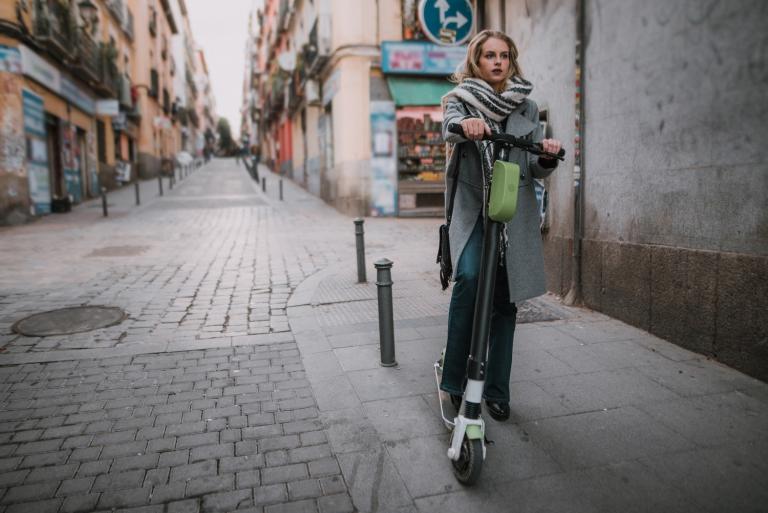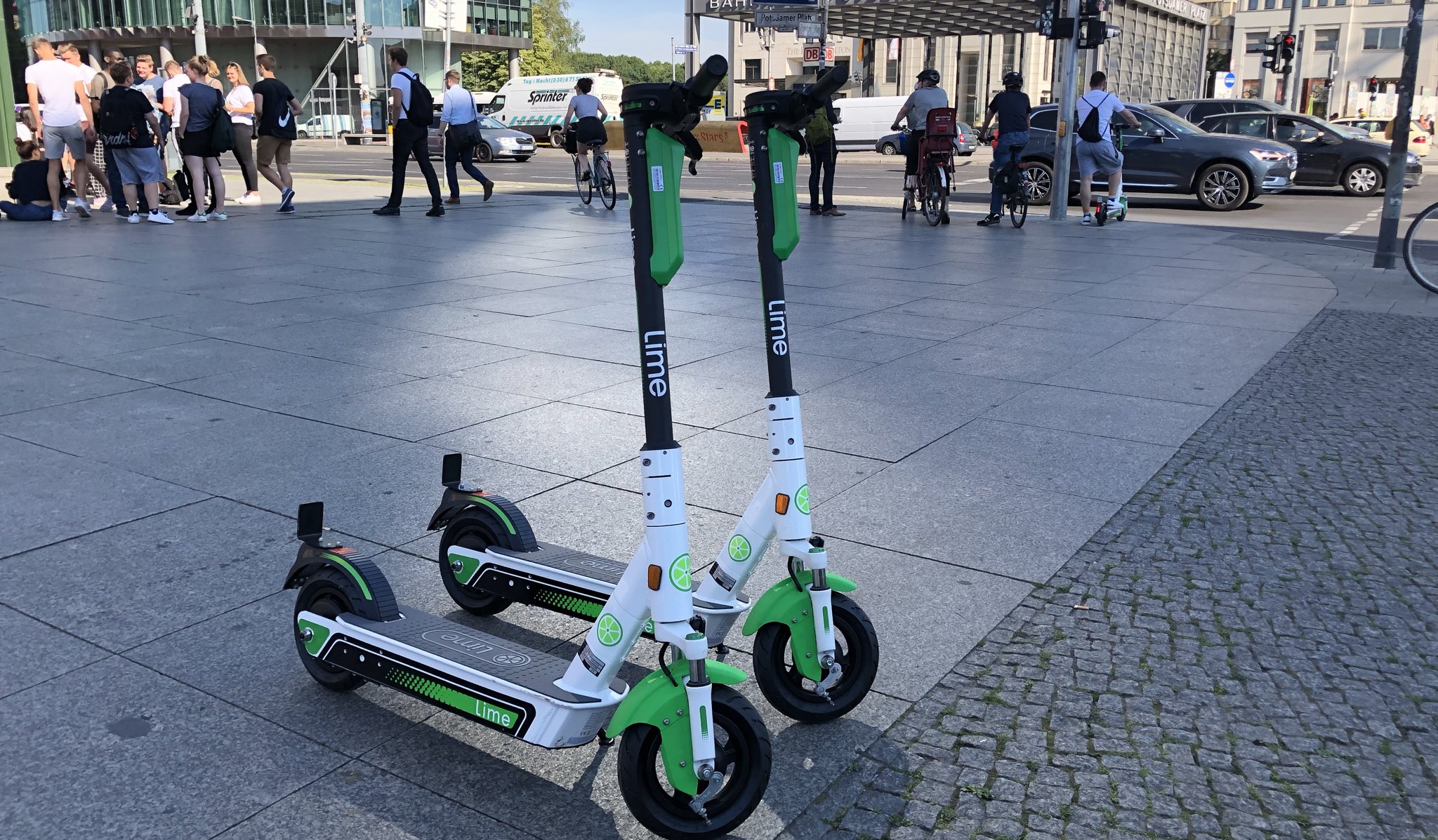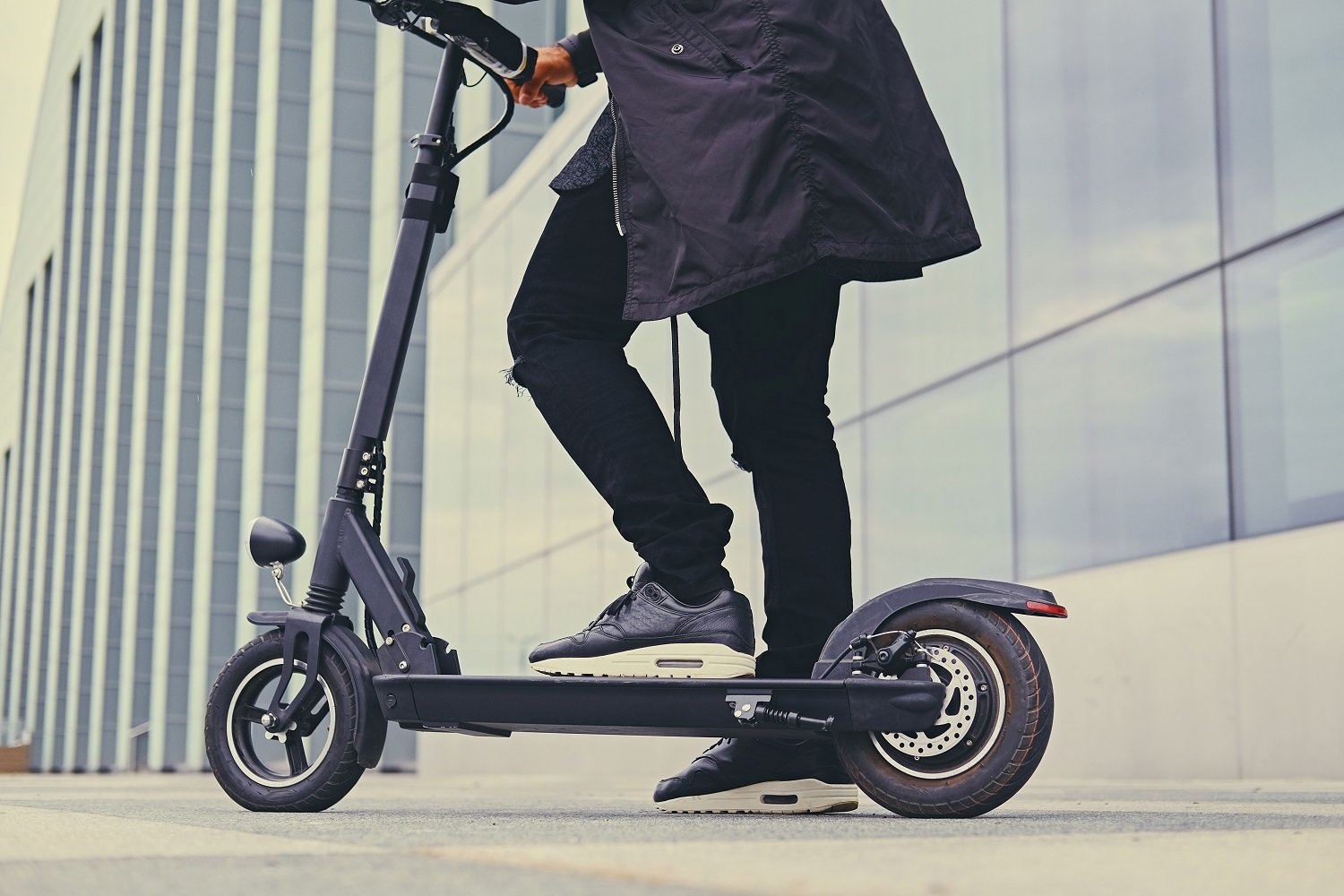It’s time we talked about e-scooters

Are electric scooters going to be the downfall of our cities? Or can all of us come together to make micromobility work?
On a recent working trip to Berlin, I made arrangements to stay an extra day so I could take in the city sights and culture. Ahead of that day, I had a rough idea of the points of interest I wanted to see, but I hadn’t researched how I would get from place to place. This being my first visit, I made no firm decisions of whether I would walk, hop buses, hail cabs, or take the subway.
Seasoned New Yorker that I am, I figured the best plan would present itself when I got there…and I wasn’t wrong. After a few days of working, the most convenient means of moving quickly and cheaply around the downtown area presented itself front and center:
The dockless shared electric scooter

How do you start scooter-ing? Download the app for a scooter company, use the map to find a nearby scooter, enter a credit card, scan a barcode, go for a ride and then end the ride on the app.
Electric scooters are a polarizing subject. Everyone seems to have a strong opinion about these two-wheeled conveyances. Some have learned to love them, others quite vocally detest them. I admit that I completely understand why. That said, I cannot add to any single-sided argument because, and I believe this is absolutely true, no single side can solve the mobility problem on their own. To that end, let’s have a think about the parties involved.
The cosmos of e-scooter providers
They say it’s sometimes easier to get forgiveness than permission, and they’re right. Uber, the eponymous mobility service, used that rationale to become the most instantly recognizable ride-hailing company on the road. By rapidly setting up operations in cities and making themselves popular (if not indispensable), they were able to leverage consumer advocacy to combat regulatory pushback.
Several e-scooter companies employed a similar strategy as Uber, showing up in cities unannounced, pushing campaigns for rapid adoption, and notifying local officials after the fact--sometimes via social media.
These Blitzscaling strategies aroused suspicion that the companies cared more about getting their e-scooters on the streets than the impact of their presence on communities. Now, with a heap of competitors, those companies are fighting hard to get scooters legalized so that they can distribute as many as possible. But cities are rightfully wary of waving them right through.

It's not just Lime who is out there. In total, we found 21 e-scooters operating in cities, including: Bird, Lime, TIER, VOI, Wind, Circ, UFO, Ofo, Eskay, Movo, Bolt, Spin, Sherpa, HOPR, Ridecell, Razor, VeoRide, Gruv, Lyft, JUMP and Wheels.
City legislators in charge of urban mobility
As you might expect, most cities weren’t ready with regulatory standards for shared micromobility services. Many city governments were taken completely off guard when shared scooter companies began dropping scooters in their streets, and those governments needed to respond quickly. Let’s not forget, these things are dangerous.
It’s the job of city regulators to step in and make decisions to ensure third-party mobility solutions are safe for citizens to use. Regulators have to make sure those solutions improve urban mobility for everyone, rather than a few. They have to make sure that city sidewalks and streets don’t become a battleground over which company can make more scooters available to the public. And most importantly, they have to make calls about where scooters can be legally ridden and legally parked.
In response, cities have taken a range of actions. San Francisco famously kicked most of the companies out, for failing to meet standards in safety, equitable access, sustainability, and several other legitimately important factors. Meanwhile, New York was ahead of the game, maintaining that e-scooters are illegal, full stop.
The local residents, and mobility riders
While mobility companies require riders to accept extensive terms and conditions, these contracts are mainly in place to protect their businesses from our ineptitude. Local traffic laws cover what’s legal and what isn’t. In between, we’re left to our own unpredictable devices.
It means riders can skirt laws like not riding powered vehicles on sidewalks or in bus lanes. They can ride at dangerous speeds in crowded situations. They can park their scooters in bike lanes, or in the middle of sidewalks, blocking other traffic. In short, they can make a real nuisance of themselves.
Then there are the residents – those that hold the companies, the city legislators, and the riders all equally accountable for littering their already congested streets with more junk. In response, they often do what one does with a dockless rental device: they relocate them. E-Scooters have been found in trash cans, hung in trees, and dumped in waterways so often that some companies make weekly rounds to retrieve drowned scooters.
The time and efficiency benefit
Ok, yes, absolutely, there are a lot of reasons to dislike scooters from multiple angles. However, before we kill them off entirely in a fit of denial, we should look at some of the real positives.
To start: they're enjoyable! Riding through the streets of Berlin, with a top speed of 18khm, I felt neither like a slow poke nor a speed menace. Of note (my fellow New Yorkers) car traffic stayed clear of the bike lane, pedestrian traffic stayed clear of the streets, and I kept off the sidewalks. It was, I dare say, harmonious.
But beyond the perks of enjoyable transit, there is a indisputable mobility benefit. If e-scooters (or shared bikes) had not been available, I would have had to take a bus or a cab to the closest station, wait for the train, ride five stops, then walk a few blocks - just to get to the first place I wanted to go. In the larger framework of my day, taking a scooter easily cut two hours of transit, creating more time for sight-seeing.
This newly-gained time and efficiency can benefit an entire city. Instead of all residents crowding into the same few modes of transport, they can use micro-mobility services to connect between spread out places, like taking a scooter to a slightly farther train line that in turn takes you directly to where you're going. In this example, commuters spread out over more trains, get to their destination more directly, and spend less time in the transit system overall.
So what's the answer?
To make this work, everyone has to work together.
Shared scooter companies, for one, need to self-regulate in the arena of responsibility for badly behaved riders and poorly parked scooters; not a small undertaking. By comparison, most shared bike systems have docking stations that strictly dictate where bikes can be checked back in. There is no broadly accepted etiquette for parking a shared vehicle that can literally be parked anywhere, and common sense doesn't seem to be having a deep enough impact.
Likewise, cities can take more strides to designate what's legal and what's illegal, then enforce those laws to lower abuse. One solution for cities could be to identify the highest traffic areas, then reclaim vehicle parking zones, replacing them with dockless mobility parking zones. With that approach, pedestrian-filled sidewalks stay clearer, and riders get better indications of the best places to park.
This means understanding how people move, and providing the data that informs how transit solutions can work together is an area where HERE excels. Bringing together the data from vehicles, traffic sensors, mobile devices and more all contribute to a living, breathing view of a city's ecosystem of movement. That view helps render better decisions, happier residents, and efficient transit.
The state of transit in cities is transforming rapidly, and the best way forward is the path that benefits everyone involved. As we empower mobility solutions on our streets, we'll see cars, bikes, and pedestrians work in increased harmony. While we get there, if you get the chance, I recommend giving a scooter a spin for yourself.
Have your say
Sign up for our newsletter
Why sign up:
- Latest offers and discounts
- Tailored content delivered weekly
- Exclusive events
- One click to unsubscribe